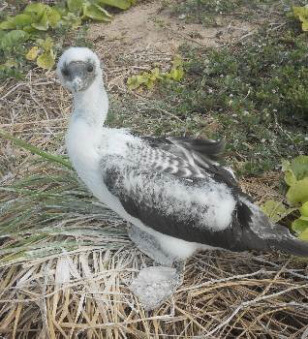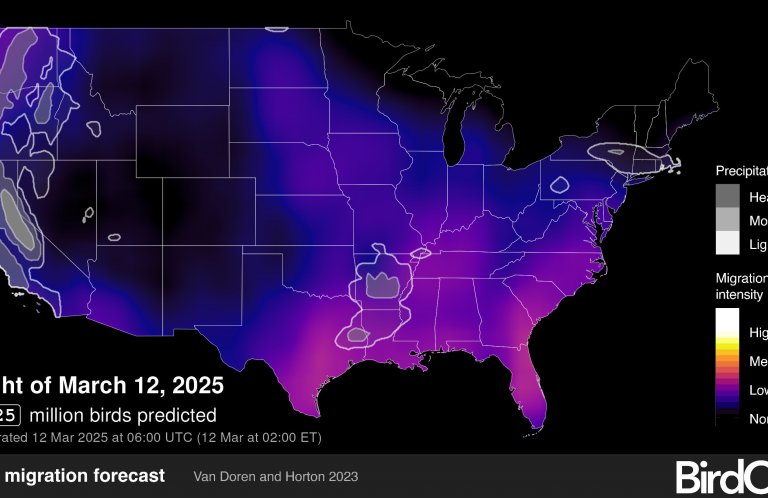Millerbird Molt Malaise
July 15—28, 2013
Michelle Wilcox
The adult Millerbirds on our little Pacific island are molting, relaxing, and enjoying some much-needed rest after a long and productive breeding season. We are eagerly awaiting the first sign of nest-building that will mark the start of the next wave of reproduction.
Now that we have known-age Millerbirds that were color-banded in the nest, we will be able to see just how quickly they begin to breed. We aren't expecting any of the 48 fledglings to successfully build nests this summer or fall, but we do predict some of the young males will start singing rudimentary songs and start trying to defend little patches of real-estate this fall.
Nature sighting of the week: Water spout!
Last week brought a series of thunderstorms to Laysan. The Millerbirds tend to shelter in the interior branches of shrubs and wait for the storms to pass. Once passed, the Millerbirds join the Laysan Finches in lively baths in the water droplets caught in leaf cups at the tops of the naupaka bushes.
On Wednesday, after a particularly rainy morning with very little bird activity, we were watching an oncoming storm from the east and noticed an oddly shaped cloud that cut like a scar straight through the other cloud layers towards the ocean. We watched it until we saw it touch the water and saw spray being splashed up. It was a water spout!
We implemented our emergency procedures, which included hourly check-ins with Honolulu, provisioning the hurricane shelter, and keeping vigilant all night. The weather passed without incident but it made for an exciting 24 hours. Never a dull moment on Laysan Island!
Other bird news
Masked Booby chicks are starting to replace their down with stiff feathers, like William (see photo), the chick on the lake trail who greets us gruffly on a daily basis as we walk by him. This is the same chick pictured in the photo from the blog post on April 22-May 5! We have enjoyed watching him mature.
The Laysan Duck nest that we were watching finally hatched two out of three eggs, and the mother has already walked her precocious little ducklings away. Some black and white-striped Red-tailed Tropicbird chicks are reaching adult size and will fledge soon. Their parents feed them by sticking their bills into the youngster's throats and then regurgitating a meal of fish or squid. This is different than the feeding of the Great Frigatebird chicks, who have to stick their heads deep into the parent's bill to seek out food. Some of these chicks are growing large enough to have orange on their faces, and their primordial, raucous screams are getting louder.
We spotted the first Brown Noddy egg hatching in the naupaka this period, as well as a new Bulwer's Petrel chick near camp. Some of the Gray-backed Tern chicks are already starting to fly a bit; it seems like only yesterday they were still in eggs.
The Sooty Tern colonies are full of chicks running around. We believe the peak of Laysan Albatross chick fledging occurred this period and, not coincidentally, tiger sharks have been seen attacking Laysan Albatross juveniles over the reefs along the west shore.
So much can change in two weeks' time, so please check back with us to see who is nesting, hatching, or fledging in August!
 Michelle Wilcox is a Millerbird biologist with American Bird Conservancy.
Michelle Wilcox is a Millerbird biologist with American Bird Conservancy.




















































